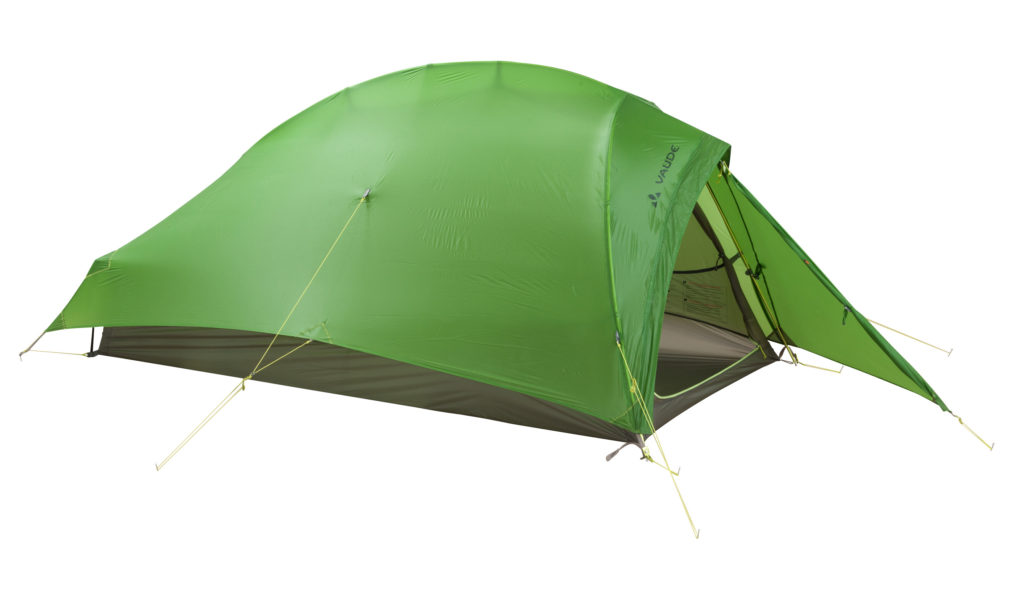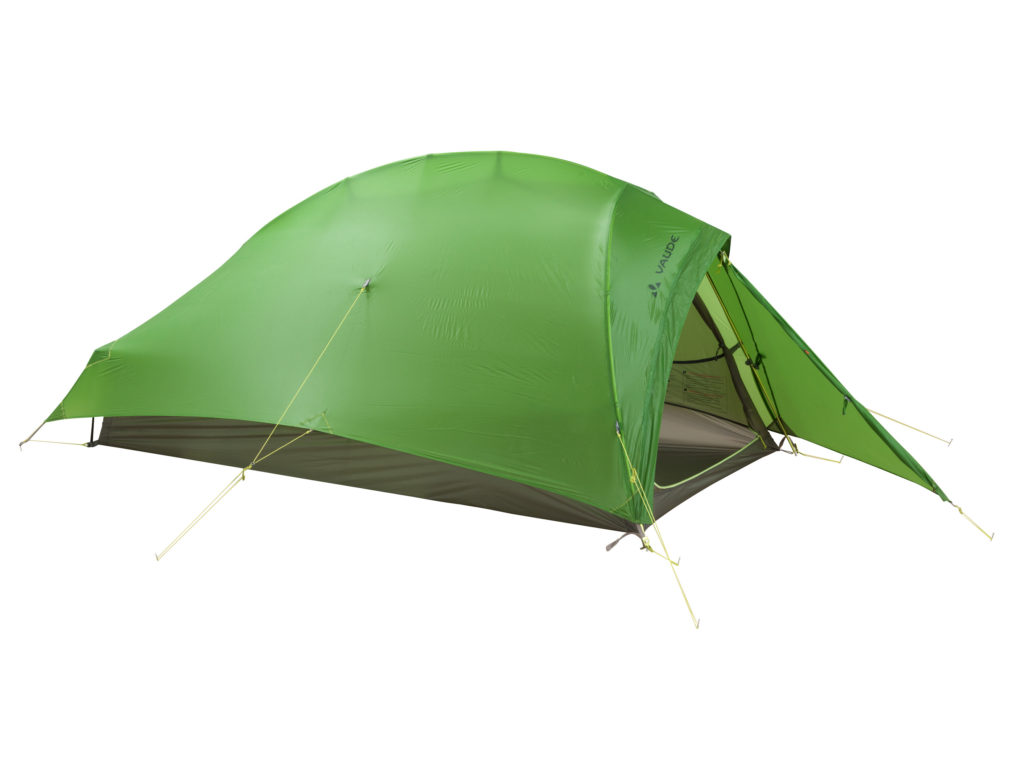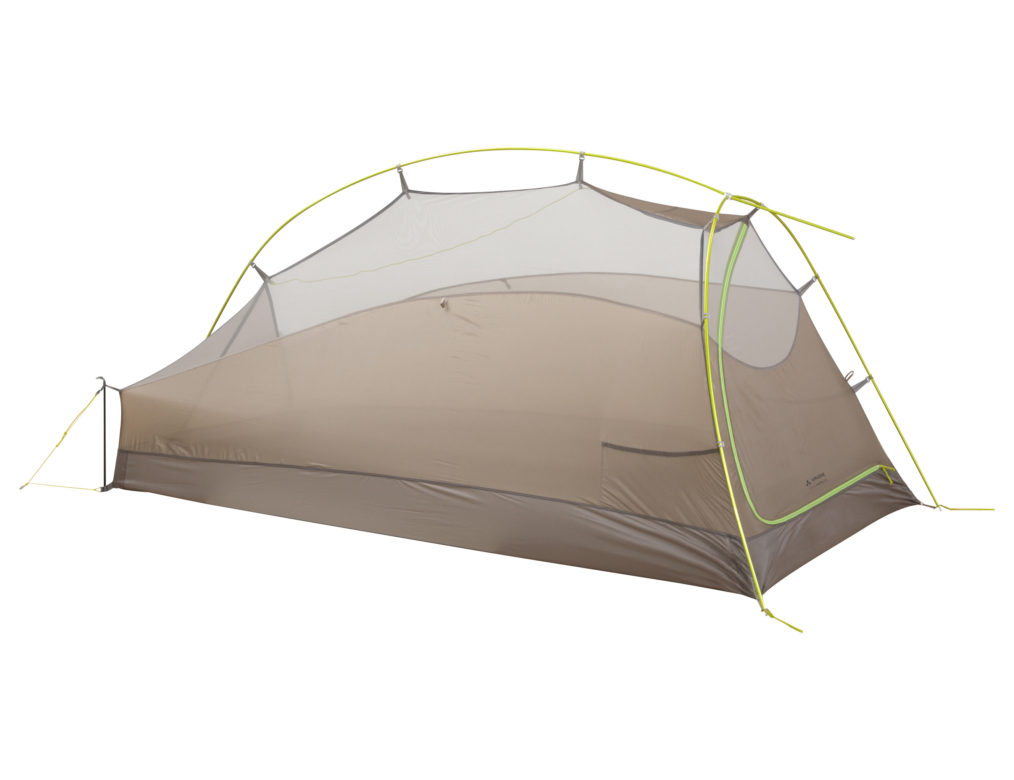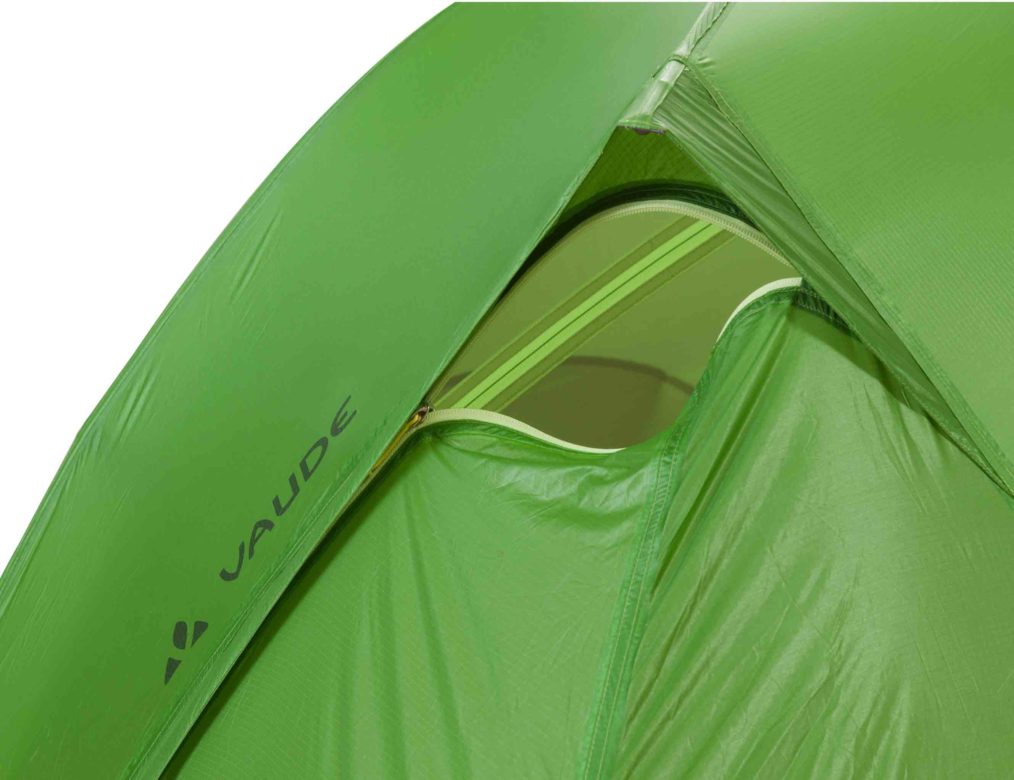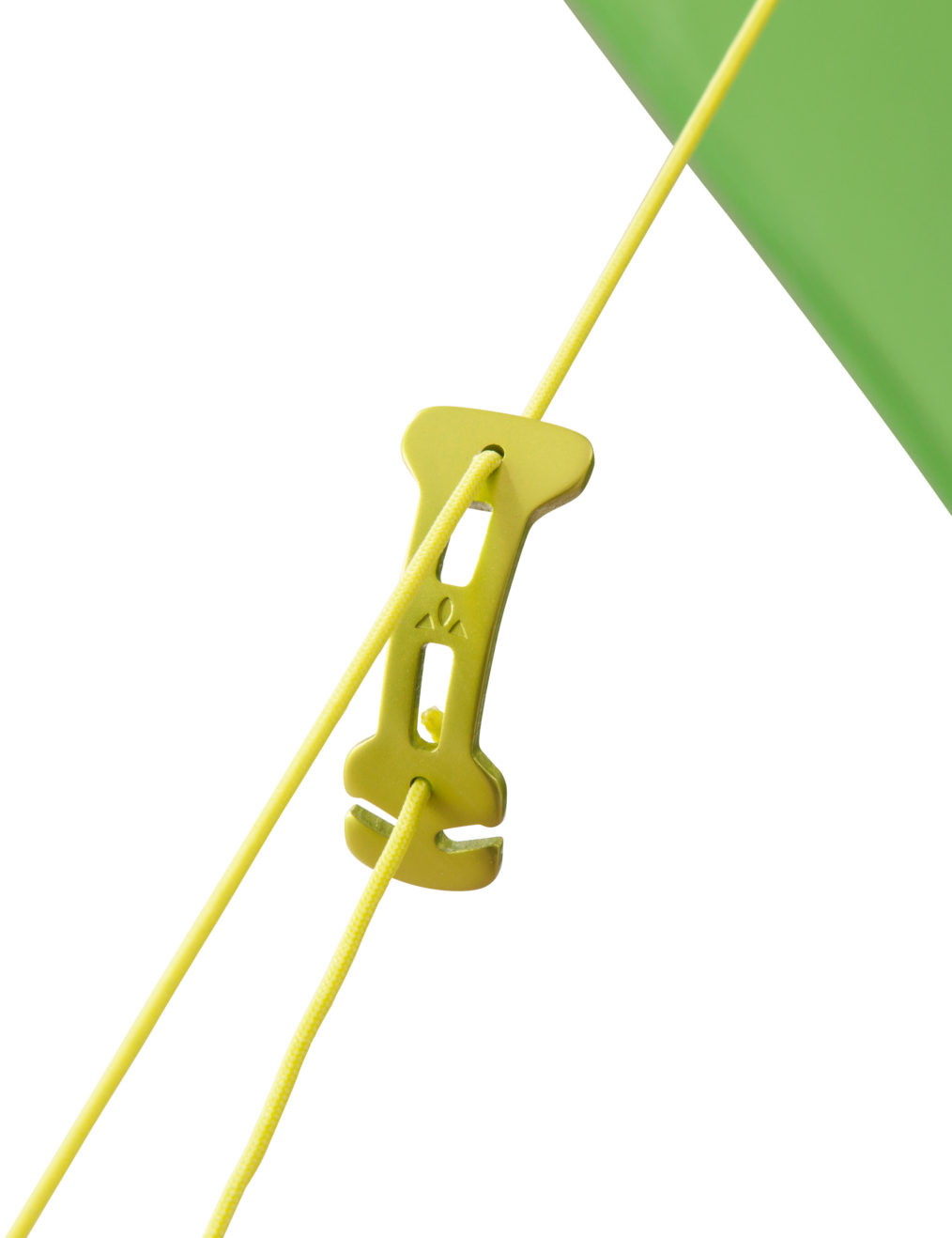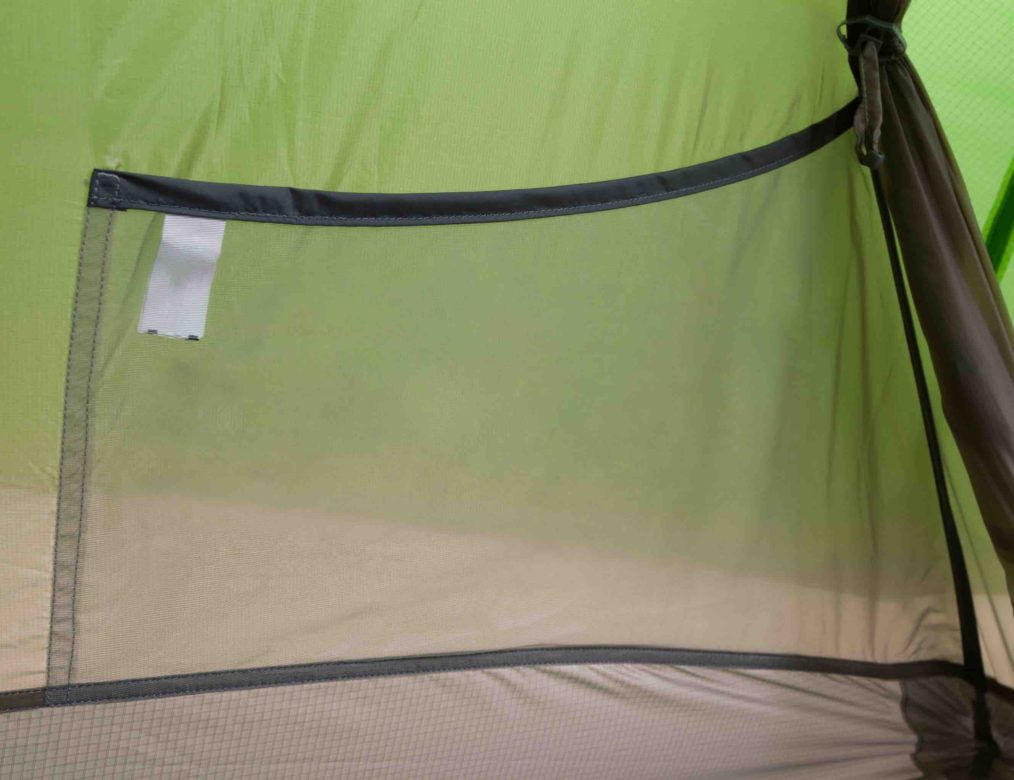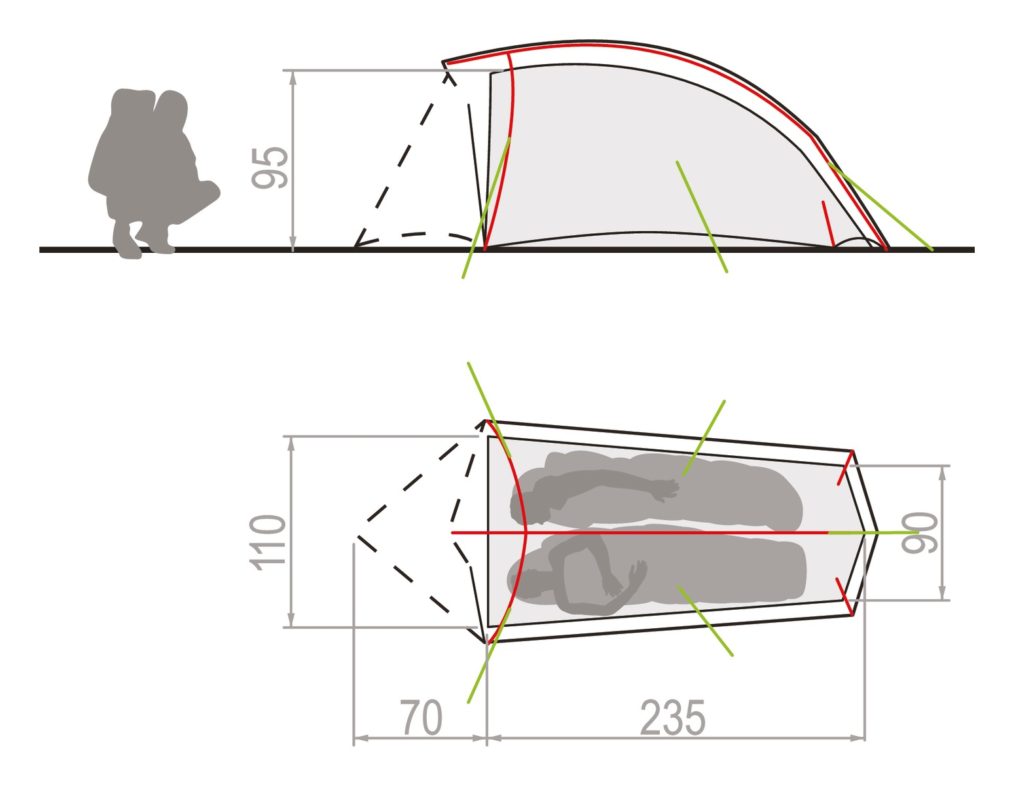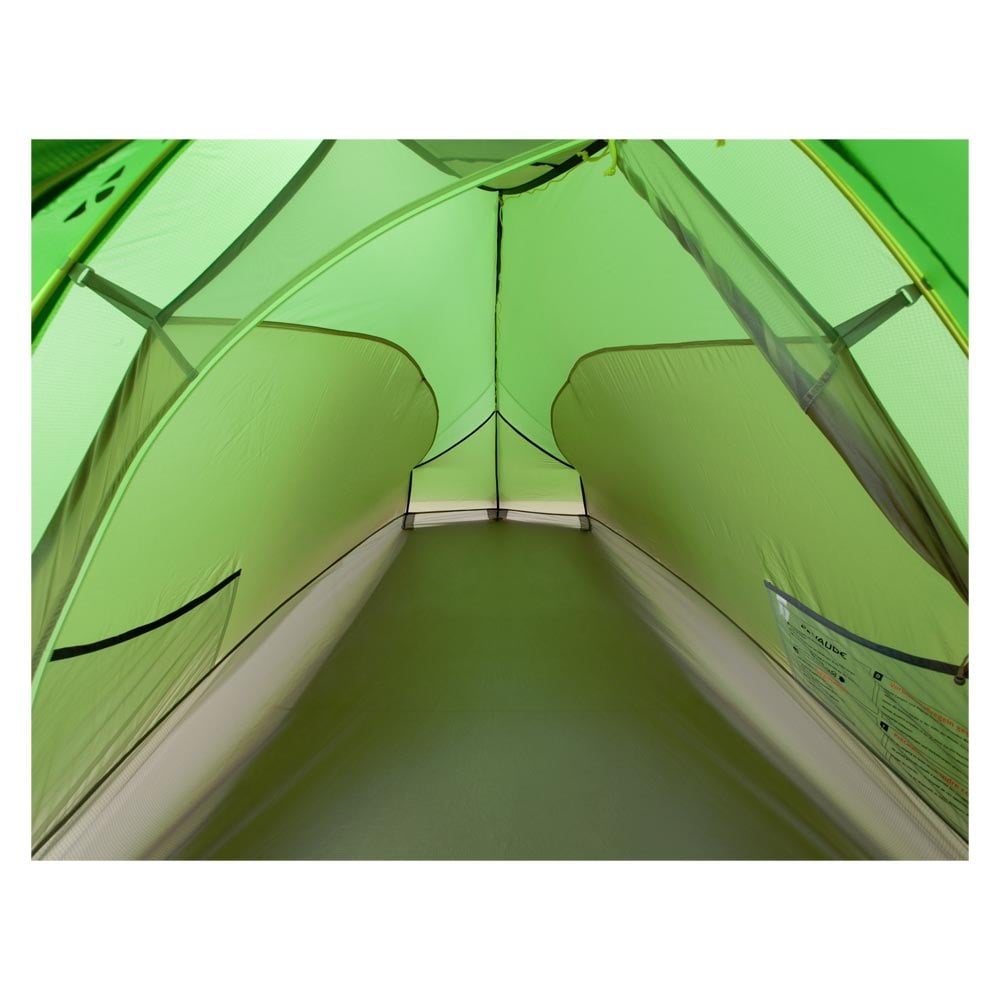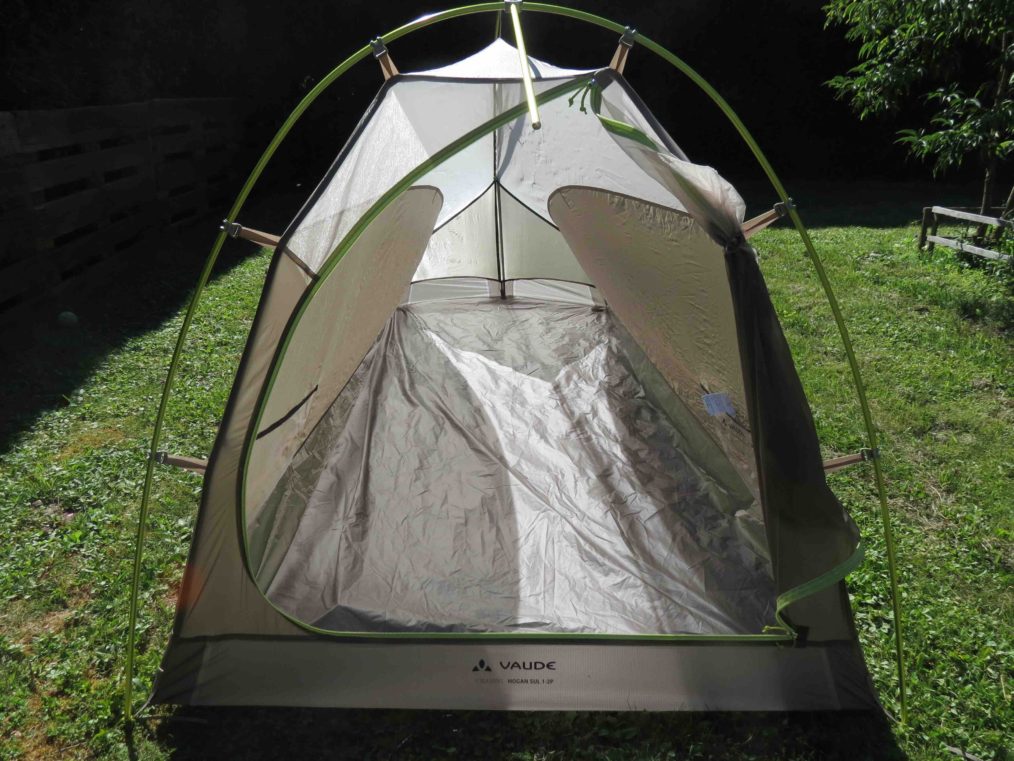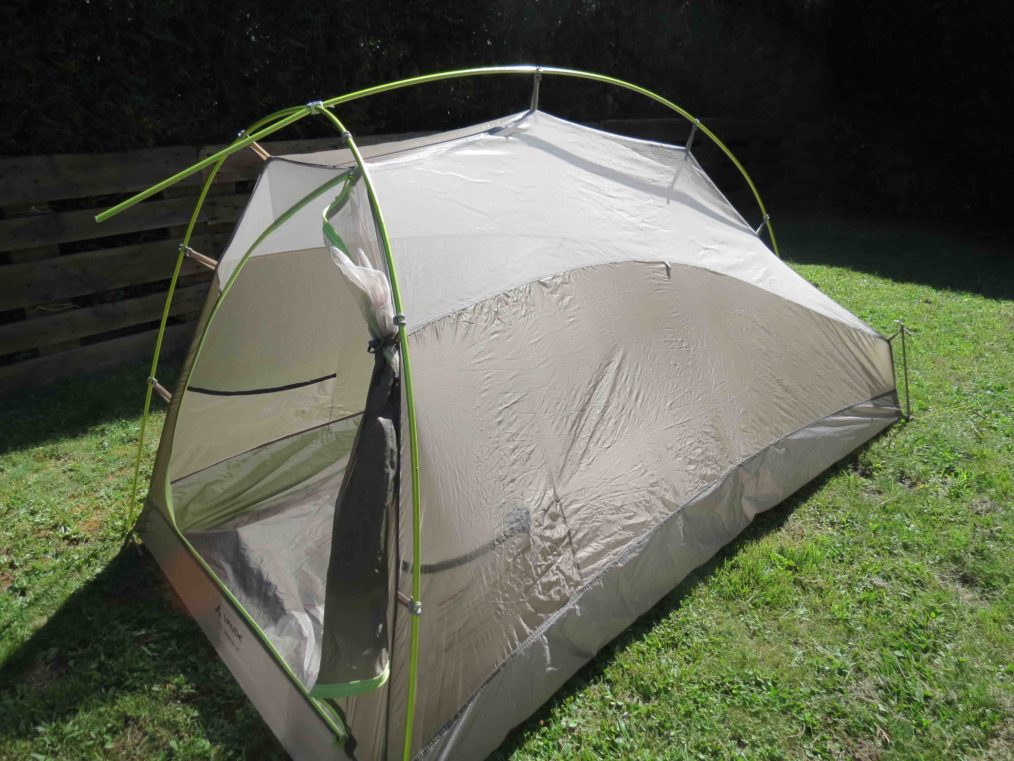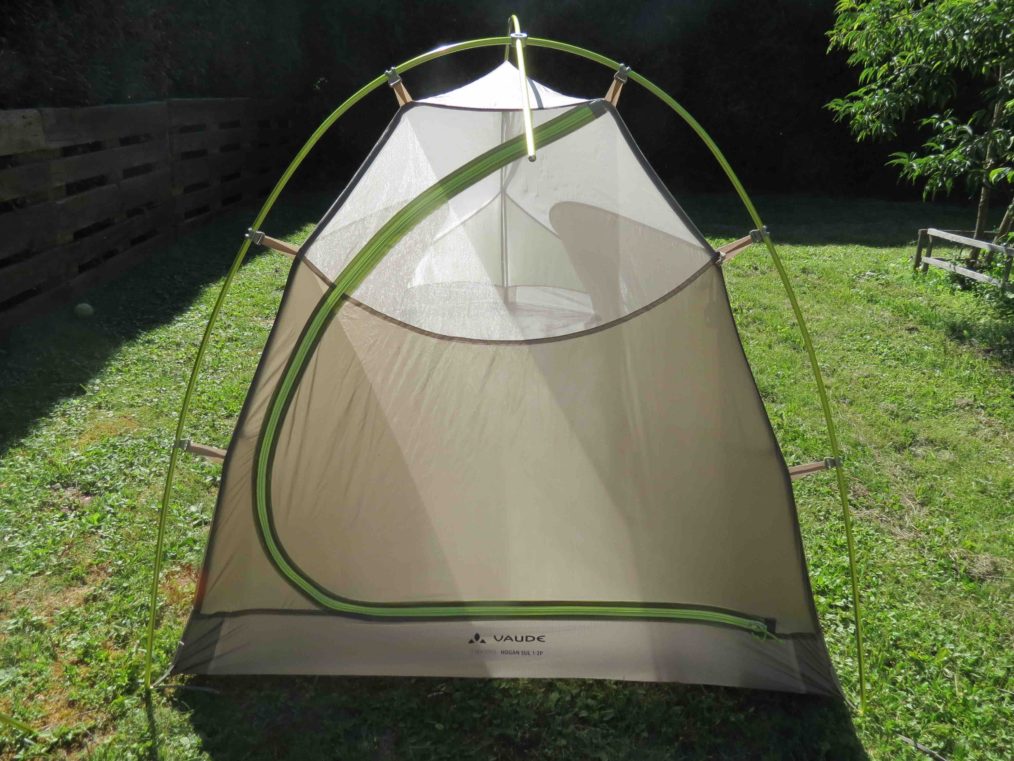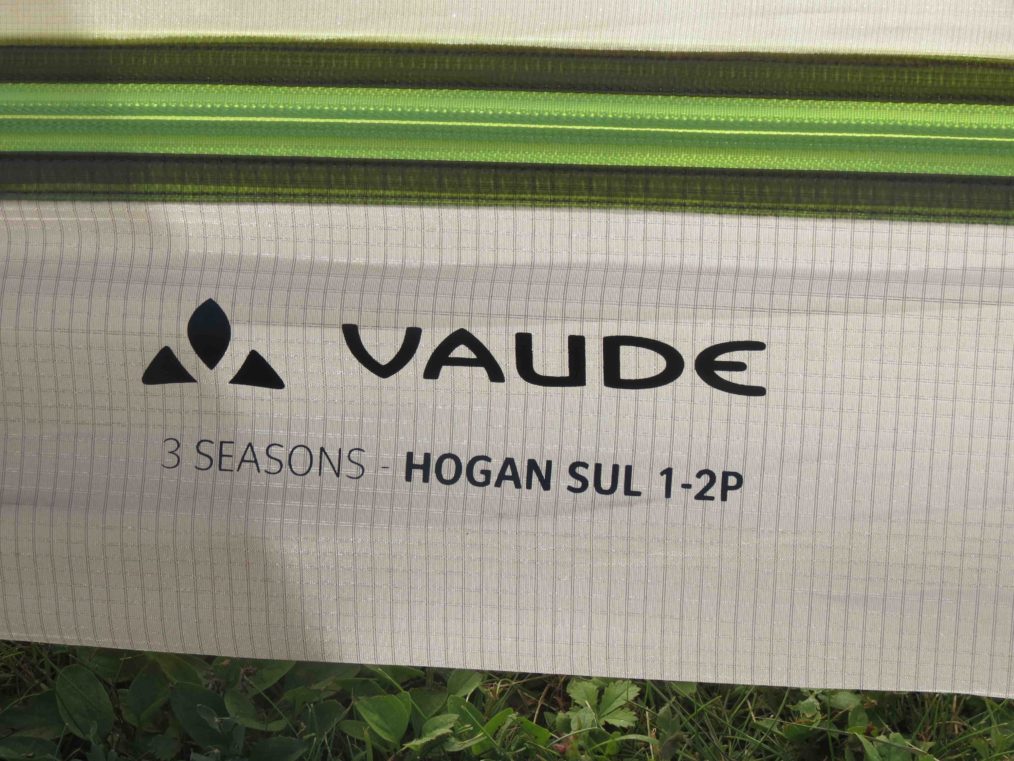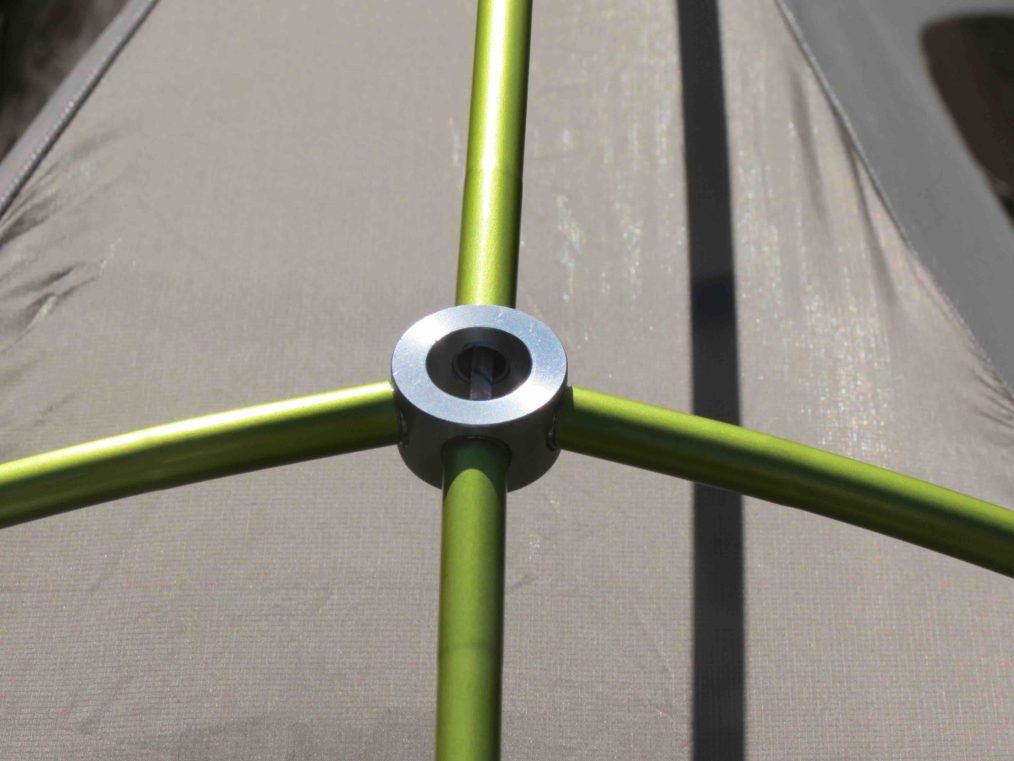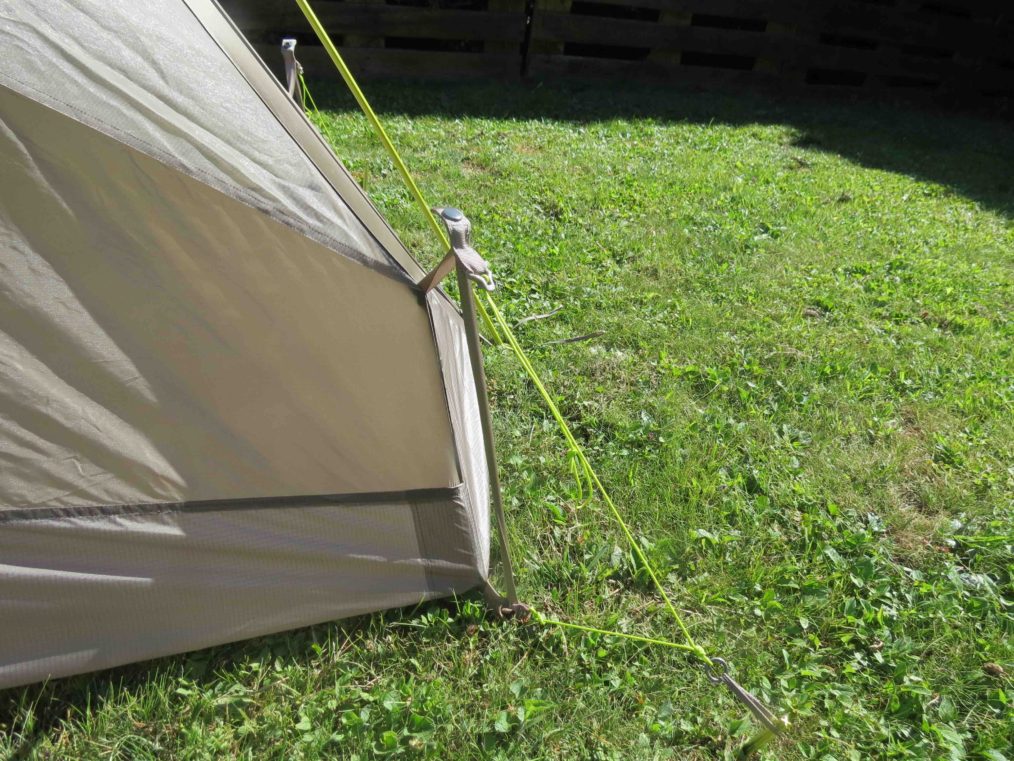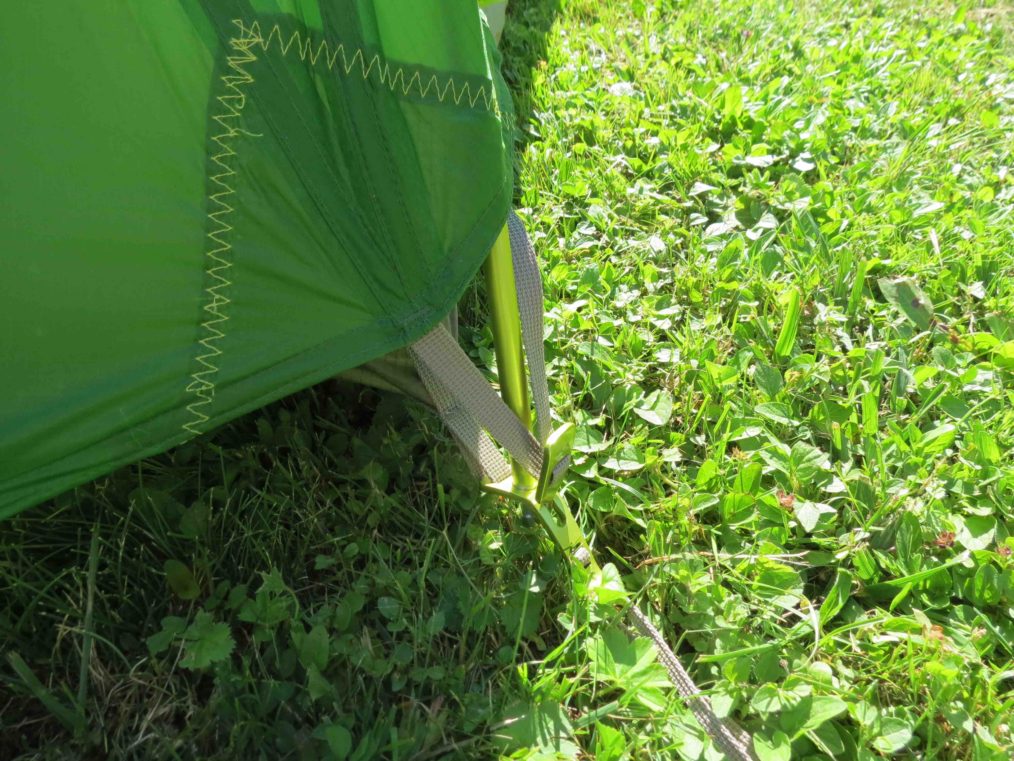We try out a very lightweight yet surprisingly sturdy backpacking tent from Vaude
The Hogan SUL 1-2P is based on a tried-and-tested configuration that has been used by Vaude for a number of years on tents such as the Taurus and Terratrio, namely one pole running lengthwise down the spine of the tent and one pole crossing at the entrance to form a vestibule at one end. There the similarities end, though, as the Hogan has been stripped of weight in every department to achieve a pack weight of just 1.2kg – not by any means the lightest tent on the market, but as we shall see, one that offers big advantages over its lighter rivals.
Features
The Hogan SUL is not cheap at over £400, but what you get for your money is some of the most advanced materials and construction techniques available on the market. The fly is made of 20-denier ripstop and is silicone-coated on both sides for increased weather protection and durability, while the inner tent is a mixure of mesh and ‘solid’ panels to give a good combination of ventilation and wind protection. The really clever thing about this tent though is the Vaude Silicon Seam Seal which the manufacturer says is the only way it is currently possible to seal silicon-coated fabrics. The two poles, Vaude’s own, are permanently connected via a central hub that gives added stability and also makes pitching the tent that bit quicker and easier.
The Hogan, as its name suggests, is a 1-2 person tent – which means it can be used either as a ‘cosy’ 2-person tent, or a solo tent with generous space for sleeping and storing gear. Since it is intended for 3-season use, the mixed mesh/fabric inner tent is optimised more for ventilation than for stopping cold drafts and breezes from entering the tent. It has additional venting options with a flysheet that can be pitched either away from the inner tent, or in a conventional, closer, configuration.
Inside, the space tapers away from the entrance – both downwards and inwards – which means you’ll almost certainly opt to sleep with your head by the door (the only option for 2 people). This tapering effect means you can’t sit upright at the bottom end which, while not much of a problem when used as a solo tent, will inevitably make the Hogan only useable for two people when actually lying down. The vestibule is a decent size that will fit one large backpack, or two smaller packs, and there’s also some useful storage pockets inside the tent – two either size of the door, and a smaller pocket in the ceiling by the door.
In use
Having used other Vaude models in the past, pitching the Hogan wasn’t too taxing, with the inner-first design being easy to understand for even the first-time user. Once the pole system is slotted together (it consists of two crossed poles, attached by a central core), the vestibule pole is slotted into two holes either side of the entrance, while the long pole is slotted in a hole at one end (the bottom), and overhangs the inner tent at the other end to be slotted into a pouch. There are hooks on the inner tent that go over the poles and give the tent its basic shape. There are two short poles at either corner of the bottom end, and these are pegged out to give improved space on the inside. The fly is then thrown over the inner and pegged out, with various attachments making sure the outer is both secure to the structure but held away from the inner.
One of the great features of the Hogan is the pitching options. As well as its standard mode (i.e. inner and fly both used), it can be pitched inner only and fly-only. Both the latter options reduce weight of course, but depend on a good degree of certainty of the conditions you will be camping in. For dry but warm weather, the inner tent on its own will give you maximum ventilation, plus protection from any airborne nasties that could interrupt your sleep. Using the Hogan like this will save you carrying the flysheet of course. Conversely, you could choose to leave the inner tent at home and just take the fly, eschewing protection from midges in favour of protection from rain. Unlike some other lightweight tents, the Hogan doesn’t need a footprint to use the flysheet on its own, but there is one available and this may well be worth getting if camping in rocky regions, since the groundsheet is very thin.
The basic structure of the Hogan is likely to be about the most sturdy you will get for a tent weighing just over 1kg, and its ability to withstand less then clement conditions is enhanced by the generous number of guy points provided. Only in strong winds and heavy rain will you start to feel a bit vulnerable in this tent, however that makes it ideal for numerous summer treks around the world. And with the ability to accommodate two people who are travelling light, the Hogan is sure to find plenty of takers even at this price.
VERDICT: A comfortable and spacious solo tent – or cosy 2-person tent – that is more sturdy than most tents of this weight


